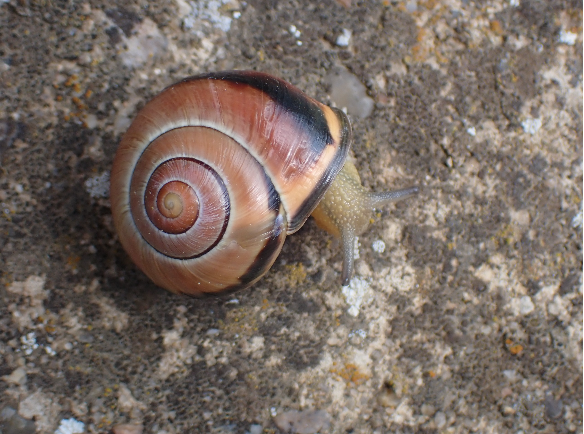To know the Santander snails, has the Common Snails of Santander guide. This is the fourth installment of materials to support knowledge of the city’s flora and fauna, prepared by SEO/BirdLife within Santander Capital Natural.
It is a supplement to the guides on butterflies, bumblebees and orchids. It includes about twenty species of snails that can be observed in the urban parks and gardens of Santander and in any other city on the Cantabrian coast, as well as in natural environments, such as the countryside or the forests in the suburban area of the city.
It is not customary to draw attention to the fauna of invertebrates and even less to species with such a peculiar appearance as the Santander snails. However, these mollusks, which can live in a variety of habitats from humid forests to caves and desert areas, coexist among people in cities.
In particular, the urban environments of northern Spain, where relative humidity is generally high and mild temperatures, are ideal for the development of a large number of snail species.
To facilitate a first contact with the knowledge of these terrestrial molluscs, SEO/BirdLife has created the Guide to Santander snailsin the context of the Santander Capital Natural project.
“We have included twenty species in the guide Santander snails which can be observed in the city’s urban parks and gardens, and on all the other coasts of Cantabria. As well as in natural environments, such as the countryside or the forests of the suburban area of the city” – says Alberto Benito, SEO/BirdLife technician and author of the guide.
Through this downloadable digital guide to the website, with illustrations created by Benito, aims to publicize the diversity of species, the places they occupy and the diversity of their diet. The Santander snails Depending on the species in question, they can be herbivores, detritivores and even predators. Their role in the ecosystem It’s very relevant.
Caracoles de Santander completes the Four guides to enjoying biodiversity
The guide of Santander snails It is the fourth installment of digital guides, prepared by the SEO/BirdLife technical team of Santander Capital Natural, with the aim of publicizing and bringing the nature from the city to the people.
Special attention is paid to lesser-known animals and plants that, as in the case of snails, go unnoticed by most people. But that integrates the rich biodiversity local.
On the Santander Capital Natural website you can download guides about butterflies, bumblebees, orchids and Santander snails. Guides designed to be carried on the smartphone and serve as support for the city walks that SEO/BirdLife offers to the residents of Santander.
Where and when to observe Santander snails
Snails are a faunal group that is as unknown as it is extensive and diverse. Due to their dependence on cool and moist environments, they are mainly nocturnal, but they appear on rainy days.
These two factors must be taken into account when observing. Santander snailsand knowing where to look: among vegetation, in cracks and under stones or tree trunks are common hiding places for these terrestrial molluscs.
Santander capital of course
Santander Capital Natural is a project led by the Santander City Council, whose main objective is to strengthen the role of the network of urban green areas in the conservation of biodiversity at a local scale, by promoting environmental services that improve the quality of life of the population help improve. residents of Santander. For this we count on strategic planning, citizen participation and the involvement of the Santander society.
This project will last until December 2025 and has as partners the Santander City Council, SEO/BirdLife, the Amica Association, the Climate Research Foundation and the University of Cantabria.
Santander Capital Natural receives the support of the Biodiversity Foundation of the Ministry for the Ecological Transition and the Demographic Challenge (MITECO) under the Recovery, Transformation and Resilience Plan (PRTR), funded by the European Union – NextGenerationEU.

